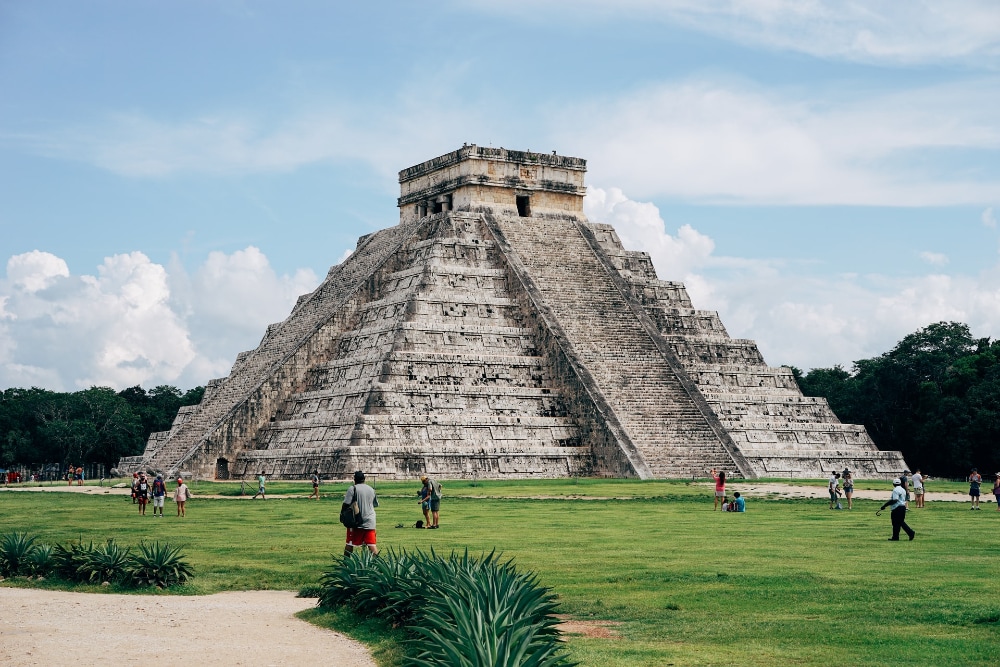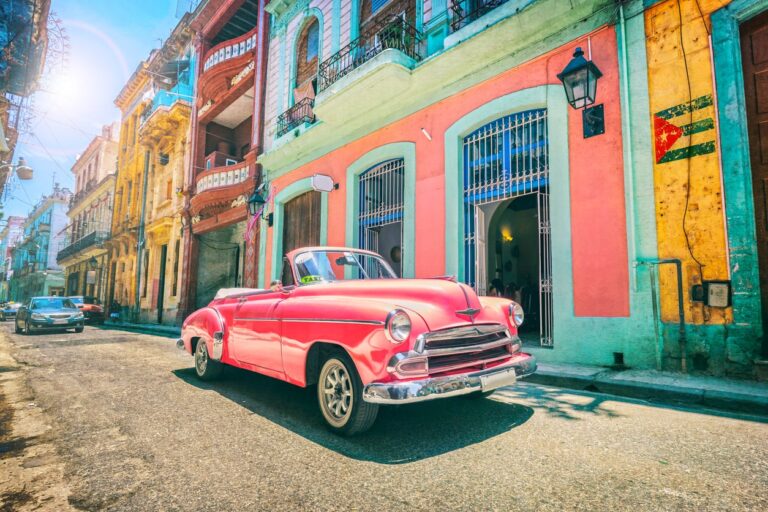Is It Safe to Travel to Mexico: 2024 Safety Guide

Safety Concerns in Mexico
When considering the question, “is it safe to travel to Mexico?” it’s important to address key safety concerns. Understanding the levels of crime and the types of violent incidents to avoid can help you make informed decisions during your travels.
Crime Levels in Mexico
Mexico experiences a variety of criminal activities, from petty theft to severe violent crimes. The most common crimes include pickpocketing, robbery, and carjacking. More serious crimes such as homicides, kidnappings, and cartel-related violence also occur frequently. It’s crucial to exercise a high degree of caution due to these high levels of criminal activity (Travel.gc.ca).
The U.S. government has limited capability to provide emergency services in many parts of Mexico, especially in areas where travel is restricted or prohibited. This includes regions plagued by widespread violent crimes like homicide, kidnapping, and robbery (Travel.State.Gov).
To give you a clearer picture, here is a table showcasing crime rates in different Mexican states:
| State | Crime Rate per 100,000 People | Main Type of Crime |
|---|---|---|
| Baja California | 756 | Homicide |
| Guerrero | 641 | Kidnapping |
| Sinaloa | 582 | Drug-related violence |
| Mexico City | 450 | Robbery |
| Chihuahua | 400 | Carjacking |
For more information on safety in specific destinations, check out is it safe to travel to cabo and is it safe to travel to puerto vallarta.
Violent Incidents to Avoid
Avoiding violent incidents is paramount when traveling in Mexico. Drug-related violence is widespread and often results in public shootings, grenade attacks, and car bombings. These incidents frequently occur in public places, posing risks to innocent bystanders (Smart Traveller). Additionally, targeted attacks on military personnel, government officials, and journalists are increasing.
To minimize risk, avoid non-essential travel to states with high levels of violence and organized crime. Many violent crimes, including armed clashes and illegal roadblocks, are concentrated in border areas. If traveling to Mexico, opting for air travel is safer than crossing via land borders.
When using taxis or rideshares like Uber, take precautions such as texting a photo of the taxi number or license plate to a friend or family member.
For more detailed insights on other travel destinations, explore is it safe to travel to thailand and is it safe to travel to peru.
Criminal Activity Warnings
Crime Hotspots
Awareness of crime hotspots is crucial when evaluating is it safe to travel to Mexico. Several areas in Mexico are notorious for violent actions and criminal activities.
- Violent clashes between rival armed groups in cities like Culiacán and Mazatlán have resulted in dangerous gunfire situations. Local authorities advise individuals in these areas to shelter in place (Travel.gc.ca).
- Criminal offenses, violence, and armed conflicts are prevalent in border regions. Risks include shootouts, attacks, and illegal roadblocks. It is recommended to travel to Mexico by air to avoid incidents at international land borders.
- Varying levels of travel advisories are issued by the U.S. government for different states in Mexico. These range from ‘Exercise Normal Precautions’ to ‘Do Not Travel’ based on crime rate assessments. Review specific guidance for each state before traveling.
Kidnapping Risks
Kidnapping is a significant concern when considering safety in Mexico. The different forms of kidnapping present unique dangers.
- Express Kidnappings: This type involves brief abductions wherein the victim is forced to withdraw money from ATMs. Foreigners, including Canadians, are often targeted (Travel.gc.ca).
- Traditional Kidnappings: Victims are physically abducted and held captive until ransom is paid. Tragically, some victims remain harmed even after ransom is paid. It’s vital to remain vigilant to avoid such risks.
- Virtual Kidnappings: Scammers simulate a kidnapping over the phone, demanding money to release a non-existent hostage. Stay alert and report any suspicious activities.
| Kidnapping Type | Characteristics | Target | Risk Mitigation |
|---|---|---|---|
| Express Kidnapping | Brief abduction, ATM withdrawals | Foreigners (including Canadians) | Stay alert, avoid isolated areas |
| Traditional Kidnapping | Physical abduction, ransom demand | Tourists and locals alike | Vary routines, remain vigilant |
| Virtual Kidnapping | Phone scam, ransom demand | Random individuals | Verify claims, report incidents |
Vehicle Safety
Vehicle safety is a major concern for travelers driving in Mexico.
- The U.S. government advises employees against driving from the U.S.-Mexico border to the interior of Mexico, except for specific routes in Baja California, Nogales to Hermosillo, Nuevo Laredo to Monterrey, and Ciudad Juarez to interior cities (Travel Advisory Mexico).
- Motor vehicle crashes are the leading cause of death for healthy U.S. citizens abroad. Exercise caution and opt for safe transportation methods to mitigate road accident risks.
For more insights into safe traveling practices in other countries, explore our articles on is it safe to travel to the Dominican Republic and is it safe to travel to Egypt.
Health and Safety Tips
When considering if it is safe to travel to Mexico, prioritizing your health and safety is essential. Below are important measures for disease prevention and road safety precautions:
Disease Prevention Measures
Several health risks may affect your travel experience in Mexico. Taking preventive actions can help you stay healthy and enjoy your trip.
-
Vaccinations: Rabies vaccines are available in Mexico and are especially recommended for travelers staying with friends or relatives or visiting smaller cities or rural areas. Services are typically available throughout most of the country (CDC Travel).
-
Water Safety: Leptospirosis, a bacterial infection spread through fresh water, is found in Mexico. Avoid swimming in fresh, unchlorinated water such as lakes, ponds, or rivers to prevent infection (CDC Travel).
-
Bug Bites Prevention: Diseases like dengue, Zika, leishmaniasis, and Chagas disease are spread by bugs and are not preventable with vaccines. Use insect repellent, wear long sleeves and pants, and sleep in air-conditioned or well-screened rooms to avoid bug bites (CDC Travel).
Road Safety Precautions
Road travel in Mexico requires vigilance due to the risks associated with motor vehicle crashes. Awareness and precautionary measures can significantly reduce these risks.
-
Choose Safe Transportation: Motor vehicle crashes are a primary cause of death for healthy US citizens in foreign countries. Opt for reputable transportation services and avoid traveling at night on rural roads (CDC Travel).
-
Seat Belt Use: Always wear a seat belt, whether you are the driver or a passenger. Ensure that child safety seats are used correctly for young children.
-
Avoid Driving Under Influence: Never drive under the influence of alcohol or drugs. Be wary of local traffic laws and practices that might differ from what you are used to in your home country.
By following these health and safety tips, you can mitigate risks and enjoy a safer travel experience in Mexico. For more information on safety in specific destinations, you may explore articles such as is cancun safe to travel and is puerto vallarta safe to travel.
U.S. Government Recommendations
Emergency Services Limitations
The U.S. government has limited ability to provide emergency services to U.S. citizens in many areas of Mexico. This is because travel by U.S. government employees to certain areas is prohibited or restricted due to widespread violent crime such as homicide, kidnapping, carjacking, and robbery in Mexico. Local emergency services are also limited in many states outside state capitals or major cities. Because of this, it is important to be aware of the limitations on services that might be critical during an emergency.
Travel Restrictions
U.S. government employees in Mexico must adhere to various travel restrictions to ensure their safety. These restrictions include not traveling between cities after dark, not hailing taxis on the street, and relying on dispatched vehicles for transportation. Employees are also advised not to travel alone, especially in remote areas.
In specific states like Chihuahua, U.S. government employees are limited to travel only in certain areas. They must follow strict restrictions to minimize risk. These measures are in place due to the safety concerns and high crime rates in certain regions.
| Travel Restriction | Description |
|---|---|
| No travel between cities after dark | For safety, avoid traveling between cities at night. |
| No hailing taxis on the street | Use dispatched vehicles to ensure safety. |
| Avoid traveling alone in remote areas | Safety measure to prevent isolation-related risks. |
For more detailed state-specific advisories and further recommendations, you can refer to our sections on is cancun safe to travel, is it safe to travel to puerto vallarta, and other location-specific guides. These articles provide additional insights tailored to those specific destinations.
Specific State Guidelines
When considering traveling to Mexico, understanding state-specific advisories can help you stay safe by avoiding high-risk areas. The U.S. Department of State frequently updates travel advisories to reflect current safety conditions.
State-Specific Advisories
Some states in Mexico are deemed more dangerous than others due to varying levels of violent crime, including murder, armed robbery, sexual assault, kidnapping, and carjacking. The advisories range from “exercise normal precautions” to “do not travel.”
Here’s a quick overview of some state advisories:
| State | Advisory Level |
|---|---|
| Baja California | Reconsider Travel |
| Chihuahua | Reconsider Travel |
| Guerrero | Do Not Travel |
| Jalisco | Reconsider Travel |
| Mexico City | Exercise Increased Caution |
| Quintana Roo | Exercise Increased Caution |
| Sinaloa | Do Not Travel |
The goal is to keep tourists informed about crime levels and other safety risks in various regions. You can find more details about specific precautions and recommendations in our articles on individual destinations, like is cancun safe to travel, is it safe to travel to pueto vallarta, and is it safe to travel to cabo.
Mexico City Caution
Mexico City, the bustling capital, has its own set of safety considerations. While the city generally has more police presence and lower levels of violent crime than other parts of the country, visitors should still exercise caution.
Key recommendations for Mexico City:
- Avoid displaying valuables: Theft and pickpocketing are common.
- Use registered transportation: Avoid hailing taxis on the street; opt for ride-sharing apps or hotel-arranged transportation instead.
- Stay in well-lit, populated areas: Especially after dark.
For more detailed advice on visiting Mexico City, please check out our guidelines in state-specific advisories.
By keeping these advisories in mind and staying informed, you can better answer the question, is it safe to travel to Mexico, and enjoy a safer trip. Additionally, explore safety in other travel destinations like is Peru safe to travel to, is it safe to travel to Jamaica, and is Colombia safe to travel.
Precautions for Solo Travelers
Traveling alone can be an empowering experience, but it requires cautious planning, especially in popular tourist destinations like Mexico. Here are some crucial tips to ensure your safety.
Female Travel Safety
Safety is a primary concern for female solo travelers. Mexico is considered one of the five most dangerous countries for women. Here are some precautions to consider:
- Stay Alert: Always be aware of your surroundings. Avoid displaying valuable items publicly or walking alone at night.
- Accommodation: Choose reputable accommodations with positive reviews by other solo female travelers.
- Text Taxi Information: When taking a taxi or ride-share, text a photo of the taxi number or license plate to a friend or family member. This simple precaution can add a layer of security.
- Blend In: Dress modestly to avoid drawing unnecessary attention. Try to blend in with the locals as much as possible.
- Emergency Contacts: Save local emergency numbers and the contact information of your embassy.
For more comprehensive safety travel tips, visit our guide on female travel safety.
Transportation Safety Tips
Getting around in Mexico can be a unique experience, but it also comes with its set of risks, especially for solo travelers. Here are some tips to navigate safely:
- Use Reputable Services: Opt for reputable taxi and ride-share services. Avoid unmarked vehicles and stick to licensed cabs.
- Pre-arranged Rides: Whenever possible, arrange for transportation through your hotel or a trusted service.
- Avoid Hailing on Street: Do not hail taxis directly from the street. Instead, use hotel transportation, ride-share apps, or pre-booked services to ensure credibility.
- Check Route: Use your GPS or map app to keep track of your route to ensure the driver is taking you to your intended location.
- Secure Your Belongings: Keep your belongings secure and avoid showing valuables while traveling. Use anti-theft bags for added security.
To learn more about transportation safety and other travel advice, check out our article on transportation safety tips.
By following these safety precautions, you can enjoy a safer and more enjoyable solo trip to Mexico. Remember to educate yourself on local customs and stay informed about any travel advisories issued by authorities. For additional safety information regarding other destinations, explore our articles such as is brazil safe to travel and is peru safe to travel to.






